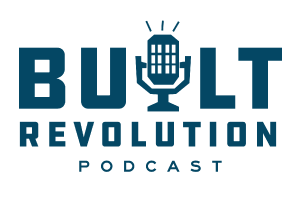In episode 3 of the Energy Evolution Miniseries, Clark Ellis discusses the hydrogen energy transition…
Pipeline Construction Waves: Will You Thrash or Crash?
Mark Bridgers kicked off the AGA’s Utility Contractor Workshop on Tuesday, April 29 in Chicago with a speech entitled “Pipeline Construction Waves: Will You Thrash or Crash?” The speech outlined the drivers of the next several waves of pipeline construction through 2030. A highlight of the speech included a look at the large amount of bare steel and cast iron gas main that still remains to be replaced in the next decade.
 This map, developed from proprietary Continuum Advisory Group analysis of PHMSA data, illustrates the miles of bare steel and cast iron main in need of replacement by state. Despite accelerated replacement programs underway for several years in the North East there is still years of work ahead. Looking beyond the states with over 5,000 miles needed there will be significant opportunities for replacement work in the South and Midwest where many of the major utilities have not yet begun accelerated replacement programs.
This map, developed from proprietary Continuum Advisory Group analysis of PHMSA data, illustrates the miles of bare steel and cast iron main in need of replacement by state. Despite accelerated replacement programs underway for several years in the North East there is still years of work ahead. Looking beyond the states with over 5,000 miles needed there will be significant opportunities for replacement work in the South and Midwest where many of the major utilities have not yet begun accelerated replacement programs.
Another interesting point of data illustrates the effect that the shale oil and gas industry is having on local unemployment. This map provided by the Bureau of Labor Statistics show the average unemployment rate by county for 2013.
 Counties with significant shale E&P activity continue to demonstrate the lowest unemployment rates relative to the national average. As the overall economy continues to improve the competition for labor will continue to increase in these markets.
Counties with significant shale E&P activity continue to demonstrate the lowest unemployment rates relative to the national average. As the overall economy continues to improve the competition for labor will continue to increase in these markets.
Later in the day, Mark led a panel of utility executives and utility contractor executives focused on work procedure changes and how to document them, roll them out effectively, and how to ensure compliance with them. During the panel, Utility and Contractor staff shared experiences on practices that have been implemented to share updated work procedures and mechanisms to communicate changes in procedures to their organizations. Panel participants included the following:
- Paul Johanning, Manager Gas Operations – Contractor Services, Dominion East Ohio
- Stu Buhrendorf, Vice President, Environmental Health & Safety and Risk Management, The Hallen Construction Company
- Dale Anderson, Executive Vice President, Miller Pipeline
- Tom Falcon, Supervisor Construction Management, NW Natural
Some of the questions addressed included:
- [themecolor]Q:[/themecolor] There is evidence that there are more work procedure changes taking place today than in the past. Do you agree that frequency is increasing and if so, can you describe what you see as the drivers of change and the degree of contribution of each driver?
- [themecolor]A: [/themecolor]All of the panel members described an environment that is experiencing many more changes where the majority of them are being required by regulatory and other bodies. The drivers quoted ranged from regulatory authorities, environmental compliance, municipal inspection and permitting authorities, material changes, etc.
- [themecolor]Q: [/themecolor]Describe the range or types of roll out approaches you have observed? Describe what type of support activities you either undertake yourself or would like to see from utilities during a roll out?
- [themecolor]A:[/themecolor] The approaches ranged from: Hands-Off & Passive – where process or procedure updated materials and shared in hard copy or electronic form with little or no instruction as to what was changed; to Hands-On & Face to Face – where process and procedure changes are reviewed in detail through a training or education environment. All parties agreed that electronic documentation distributed in an electronic fashion with details on specific changes noted is the most efficient method to distribute changes… but not necessarily the most effective.
- [themecolor]Q: [/themecolor]What are the approaches, in your opinion, to ensure compliance with new work procedures? What is the most appropriate role of the utility in ensuring compliance? What is the most appropriate role of the contractor in ensuring compliance?
- [themecolor]A:[/themecolor] “Tell what you are going to tell em; Tell em; Tell em what you told em!” Followed by a “trust but verify” approach. All parties described the critical but distinct roles of supervision, inspection, quality assurance, and quality control. The panel then went on to describe their perspectives of how to apply the functions of supervision, inspection, quality assurance, and quality control most effectively to yield compliance.

